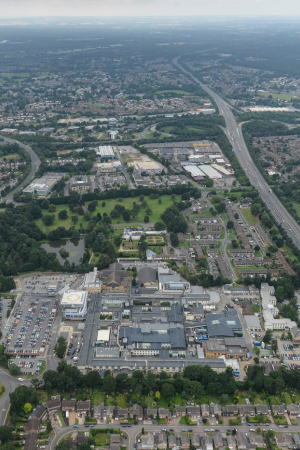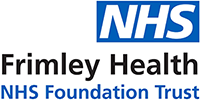Securing the future of Frimley Park Hospital
 Frimley Park reaches the half century mark next year and after almost 50 years of activity at the site we continue to meet the high standards of care our patients and staff expect.
Frimley Park reaches the half century mark next year and after almost 50 years of activity at the site we continue to meet the high standards of care our patients and staff expect.
What was considered state-of-the-art building technology in 1974 is now showing its age having exceeded its 30 year design life expectancy.
Like many other public buildings developed at that time, Frimley Park was built with a certain type of building material, known as Reinforced Autoclaved Aerated Concrete (RAAC) planks, which formed the roof and walls, making up about two thirds of the building structure.
RAAC planks are prone to deterioration due to things like water ingress, temperature change and excess weight from services on the roof. In recent years, risks and issues have become apparent in buildings that have used RAAC planks elsewhere in the UK and as a consequence NHSE published a mandate to all trusts constructed of RAAC to:
- Carry out annual surveys to every plank in the hospital.
- Implement a programme of works to support every plank in the hospital, keeping our patients, visitors and staff safe; and
- Ultimately eradicate every plank by 2030.
The issue of RAAC was first discovered at FPH in 2012 when support works commenced and this has now increased in activity since the mandate issued in 2019 / 20.
We are working on further proposals for the future and will continue to monitor the RAAC constructed areas while they are in use.
We were delighted that in May 2023 Frimley Park Hospital, along with other hospitals substantially affected by RAAC, were added to the Government's New Hospital Programme. It means that by 2030 we will have an entirely new replacement hospital and we are already in the process of finding an appropriate site nearby.
We are also planning an extension on the current site which will help us secure and maintain our services for patients while we continue maintenance related to RAAC and manage our transition to the new site.
What we are doing to maintain our hospital
We have run an extensive programme of maintenance and repair at Frimley Park for more than ten years. The most significant development was replacing the external roof covering in 2012, at a cost of £5 million, which offers substantial protection against RAAC deterioration.
We continue to monitor the RAAC planking and conduct regular maintenance and repair work as a precaution. We work in partnership with structural engineering and construction expert advisors who support our monitoring and maintenance activities to ensure any risks are identified and proactively managed. Our staff are also vigilant and alert to any indications that further work may be needed.
Nonetheless, it can be challenging to inspect RAAC planks when they are located in clinical areas operating 24/7. The RAAC planks can also be difficult to physically access, and it requires careful planning with clinical and operational teams to balance the need for clinical capacity in the face of great operational pressures with the need to ensure safety of the RAAC planks.
These challenges, along with the Government’s requirement to remove RAAC constructed buildings by 2030, were what prompted us in 2021 to make a bid to join the New Hospitals Programme. This was ultimately successful so the RAAC planks will be eliminated through a complete replacement of Frimley Park Hospital before the next decade.
Where is this happening?
About 65 per cent of the hospital is affected by RAAC planks including many of the core areas such as wards, theatres, maternity, the hospital streets (corridors), and ICU. It is also present in other buildings on site which were originally residences and more recently used as offices.
Later additions to the site (such as the Emergency Department and Parkside) have not been constructed with RAAC planks.
What this means for our patients
When substantial repair works are undertaken, it can involve closure of the affected areas for long periods – for example to secure the planks above the theatres we have had to take at least two out of use over the last couple of years as well as half of our ICU at a time. This rolling programme of works will continue. While all our ward areas are safe, we have not been able to undertake permanent repairs.
We have now received planning permission for a new extension which should be completed by the end of 2024. This will provide additional beds, including far more single rooms, which will help us reduce elective waiting lists, allow us to better cope with Covid and seasonal pressures, and enable ward refurbishments and remedial work for areas affected by RAAC planking.
We will update the information on this page regularly and further provide further news on the new Frimley hospital as our work progresses.

